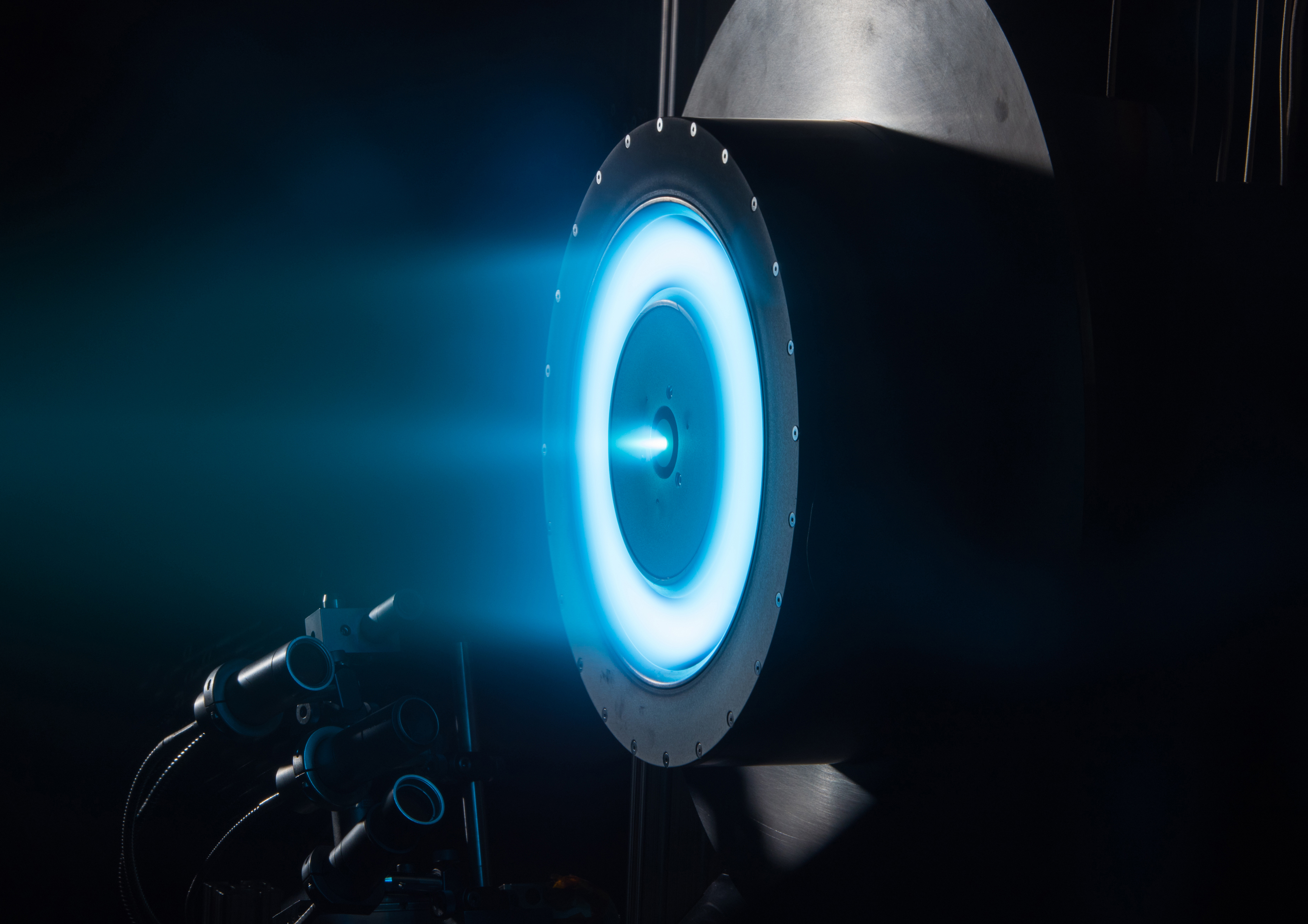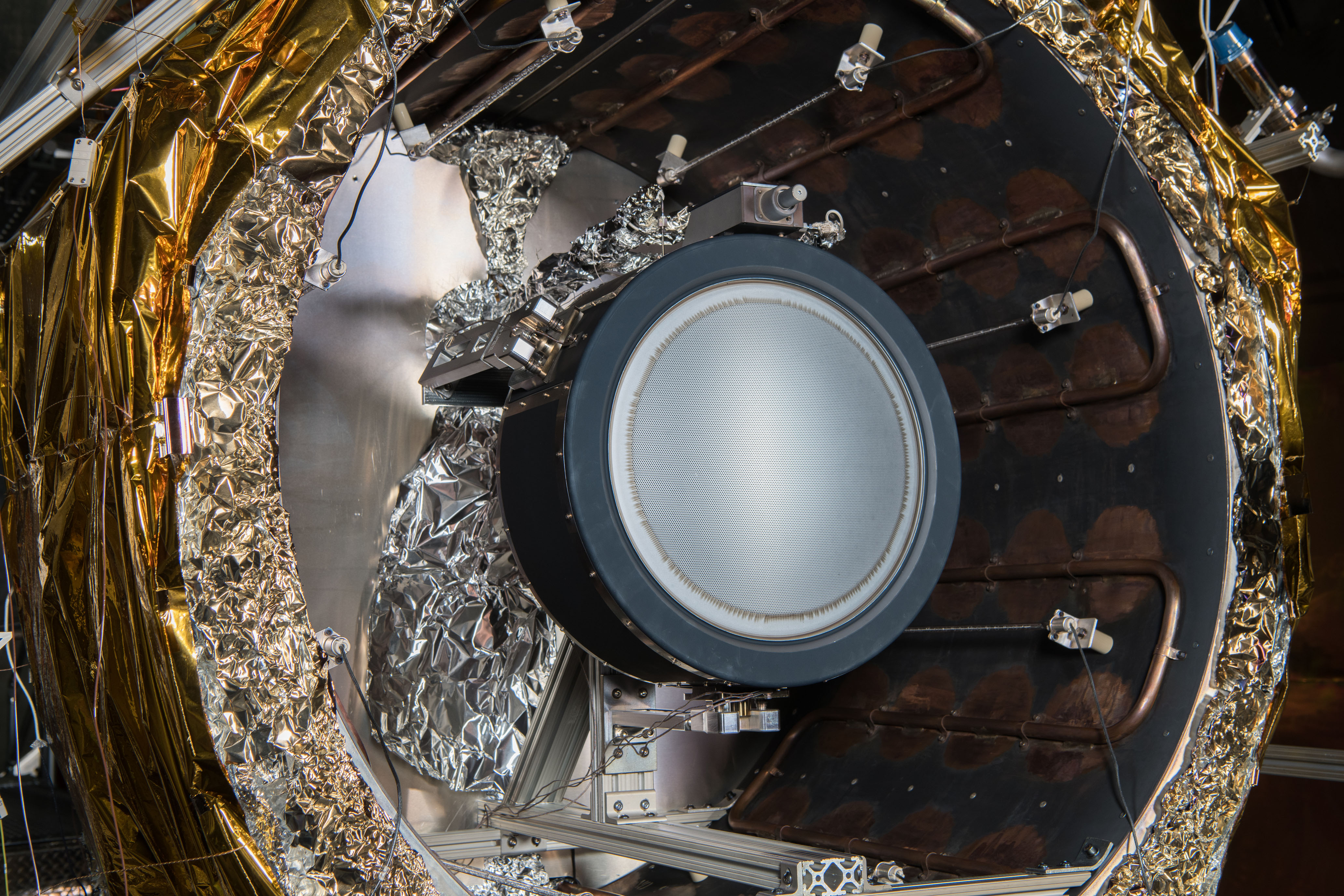
Hall thrusters generate and trap electrons in a magnetic field and ionize an onboard propellant — such as the inert gas xenon — into an exhaust plume of plasma that accelerates spacecraft forward. Several Hall thrusters can operate in tandem to increase power, accelerating crew and cargo in deep space well beyond speeds obtainable with chemical propellants alone.

A flight-certified gridded ion thruster tested at NASA’s Glenn Research Center will be used on NASA’s Double Asteroid Redirection Test (DART), the first-ever space mission to demonstrate asteroid deflection by kinetic impact.
For experts in the field, it comes as no shock that electrically powered systems are the next-generation choice for literally moving space exploration forward. Although chemical propellants remain necessary to escape Earth’s gravity well, once craft are in or beyond orbit, electric propulsion is proving the most promising way to go.
Advantages are enticing: among them, significant weight savings, more accommodating designs for crew and cargo, and increasing but smooth acceleration over time.
“Electric propulsion has blossomed over the last 10 to 15 years. It’s really coming into its own,” said Tim Smith, chief of the Space Technology Project Office at NASA’s Glenn Research Center. “It’s everywhere now: from communications satellites, to deep space, to the Lunar Gateway and to human exploration. At NASA we’re growing to meet the demand.”
Such demand is driven by cost savings and flexible design options. Estimates indicate that electrically propelled systems can use 90% less fuel for greater results than comparable, conventional chemical propulsion. The weight decrease allows engineers to modify vehicle architectures to better suit individual missions.
Current Favorites
A central power source drives electric propulsion (EP): either sunlight collected by solar arrays — an arrangement favored in most designs — or a nuclear heat source coupled to an electric generator. In either case, electricity interacts with an onboard store of gaseous propellant to create a highly charged plasma, a mix of ions and free electrons. Upon exit, the plasma accelerates craft forward.
High-power solar systems under development use Hall thrusters that can generate speeds of more than 65,000 miles per hour, enough force to move cargo and perform orbital transfers. Collaborating NASA facilities — the Glenn center and the Jet Propulsion Laboratory — have successfully tested a magnetically shielded 12.5-kilowatt Hall thruster, which enables years-long continuous operation, a vital consideration during deep-space exploration missions.
Cousins to Hall thrusters are gridded ion thrusters that apply an electric field across a pair of plates called grids. The electric field attracts positively charged particles to a negatively charged plate, called an accelerator grid, where the particles are focused and expelled at high speeds through thousands of tiny holes within the grids.
In both cases, it’s a bigger bang for the propellant buck. “Because the plasma exits at such high speeds, you can accelerate for much longer periods of time,” said George Schmidt, chief of NASA Glenn’s propulsion division. “It’s basically propellant efficiency.”
Keen Commercial Interest
For companies that either support NASA missions, or are themselves eager to license NASA innovation, it’s a fertile time to partner on EP development. “Now is the most interest I’ve ever seen in using the technology for commercial application,” said Dave Jacobson, chief of NASA Glenn’s electric propulsion systems branch. “It’s a stark difference from the last 25 years. It’s tremendous growth.”
NASA Glenn has worked with such firms as Ad Astra, Aerojet Rocketdyne, ATK Aerospace, Deployable Space Systems Inc., Colorado Power, Busek Inc., Maxar Technologies and MSNW. NASA Glenn awarded a contract to Aerojet Rocketdyne for development of a high-power 12.5 kilowatt Hall thruster, and continues to work with that company and Maxar to develop the EP-driven Power and Propulsion Element (PPE) for NASA’s Lunar Gateway.


